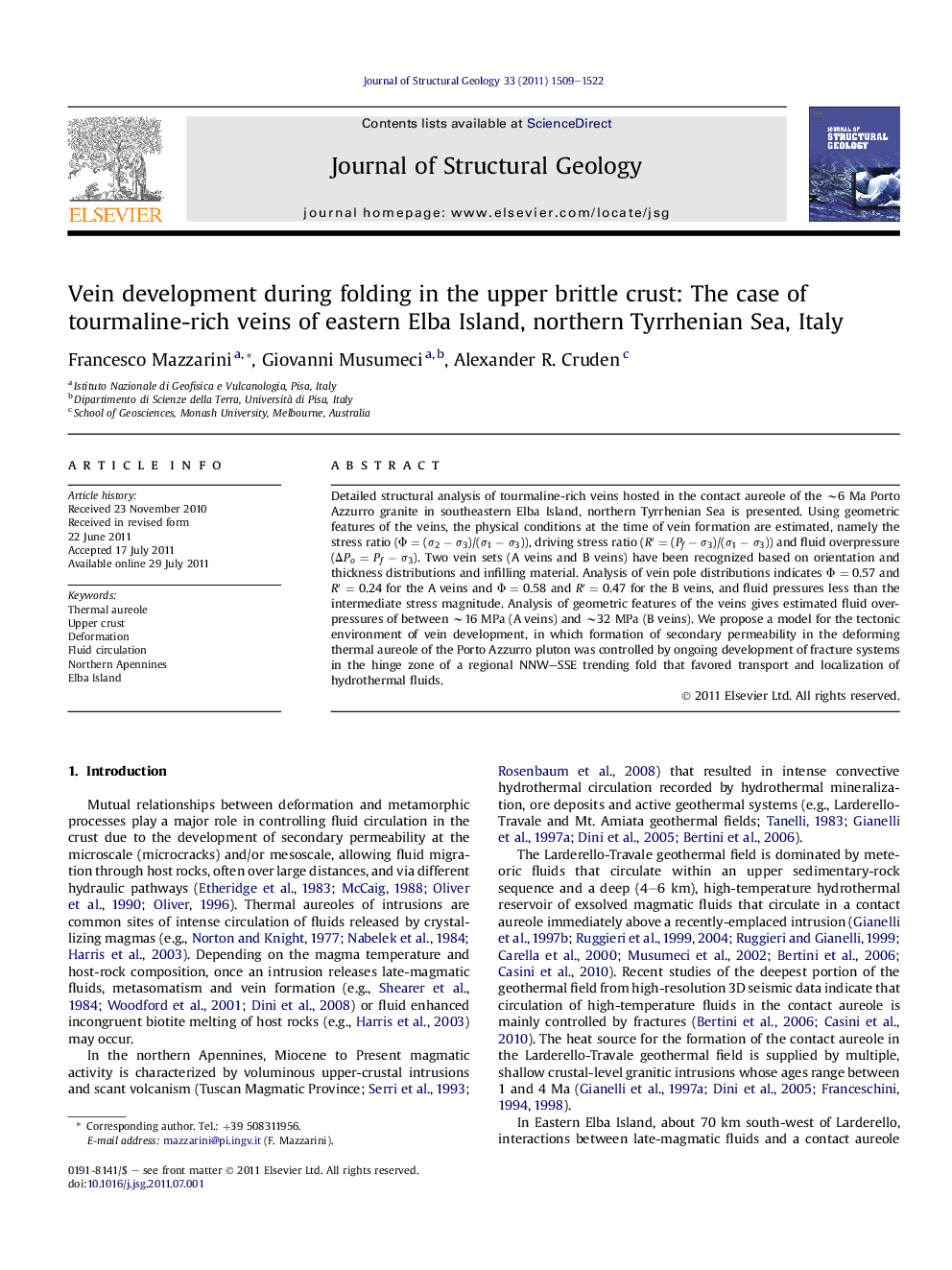| Article ID | Journal | Published Year | Pages | File Type |
|---|---|---|---|---|
| 4733315 | Journal of Structural Geology | 2011 | 14 Pages |
Detailed structural analysis of tourmaline-rich veins hosted in the contact aureole of the ∼6 Ma Porto Azzurro granite in southeastern Elba Island, northern Tyrrhenian Sea is presented. Using geometric features of the veins, the physical conditions at the time of vein formation are estimated, namely the stress ratio (Φ = (σ2 − σ3)/(σ1 − σ3)), driving stress ratio (R′ = (Pf − σ3)/(σ1 − σ3)) and fluid overpressure (ΔPo = Pf − σ3). Two vein sets (A veins and B veins) have been recognized based on orientation and thickness distributions and infilling material. Analysis of vein pole distributions indicates Φ = 0.57 and R′ = 0.24 for the A veins and Φ = 0.58 and R′ = 0.47 for the B veins, and fluid pressures less than the intermediate stress magnitude. Analysis of geometric features of the veins gives estimated fluid overpressures of between ∼16 MPa (A veins) and ∼32 MPa (B veins). We propose a model for the tectonic environment of vein development, in which formation of secondary permeability in the deforming thermal aureole of the Porto Azzurro pluton was controlled by ongoing development of fracture systems in the hinge zone of a regional NNW–SSE trending fold that favored transport and localization of hydrothermal fluids.
► High-temperature hydrothermal systems in dynamic contact aureole. ► Enhancement of secondary permeability by deformation of contact aureole. ► Ongoing development of fracture systems in the hinge zone of a regional fold. ► Physical conditions of vein formation in the contact aureole. ► Shortening phase during late Miocene in northern Tyrrhenian Sea.
